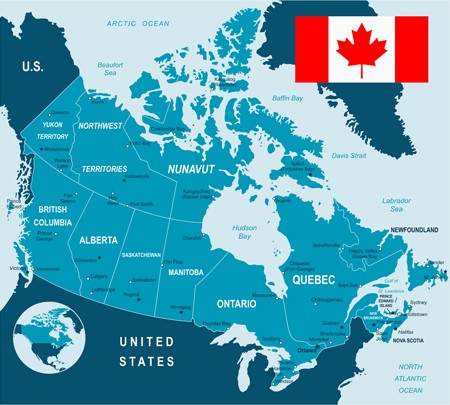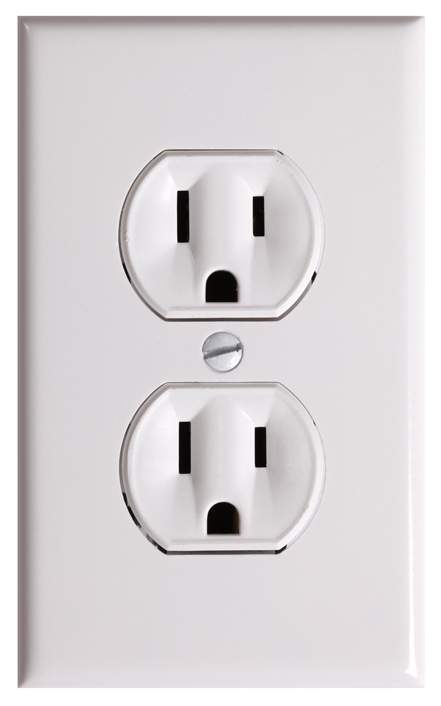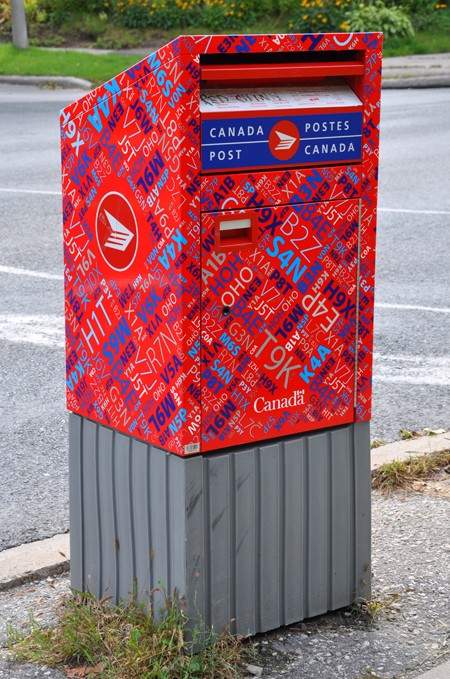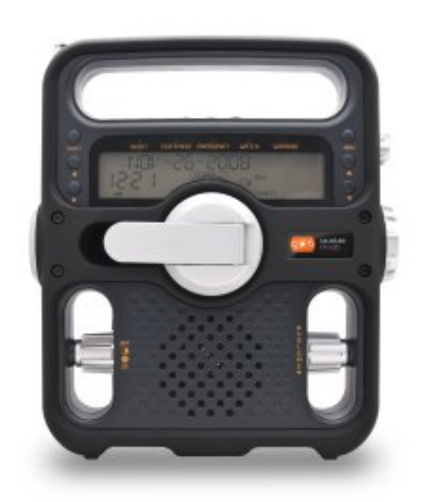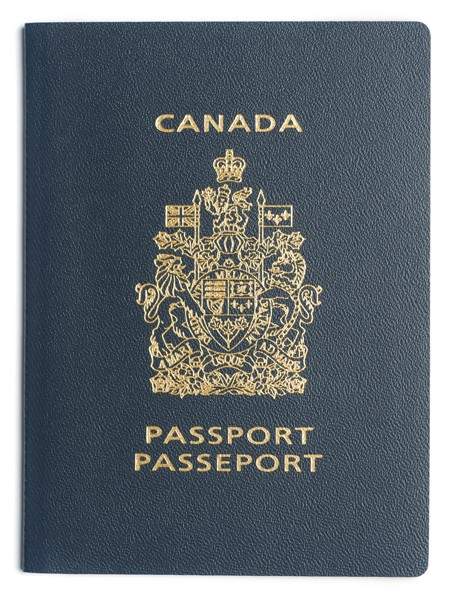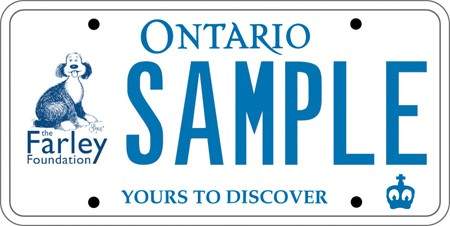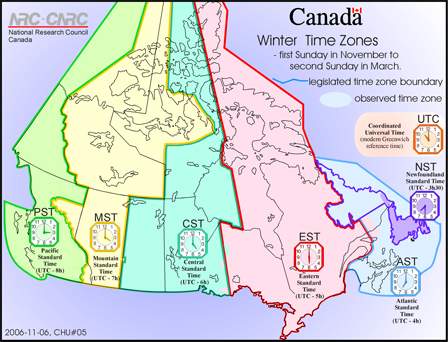No
Basic Facts About Canada
Canada |ˈka-nə-də|
noun
the second-largest country in the world, covering the entire northern half of North America with the exception of Alaska... official languages, English and French; capital, Ottawa.
— DERIVATIVES Canadian (noun & adjective)
Oxford Dictionary of English
Geographic Statistics
Population: 37,806,989 (official estimate as of November 17, 2019. See Canada’s Population Clock for realtime estimates.)
Total land area: 9,984,670 square kilometers (includes freshwater areas)
Total freshwater area: 891,163 km square kilometers
Coastline: 202,080 kilometers (estimate)
Capital city: Ottawa, Ontario
Geographical coordinates: 60° 00 N, 95° 00 W
Bordering nations: United States of America (southern land border plus northwestern land border with Alaska for a total land border length of 8,893 kilometers), Greenland/Denmark (sea border, via Arctic Ocean), St. Pierre and Miquelon, France (sea border, via Atlantic Ocean)
Largest city: Toronto, Ontario
Name
The name “Canada” is said to be derived from the Huron-Iroquois word Kanata, meaning “village” or “settlement.” According to traditional lore, the name became common among Europeans during the early colonial period and is rooted in a misunderstanding by French explorer Jacques Cartier (1491–1557), who believed it to be the traditional aboriginal name of the lands he had discovered.
From 1867 to the early 1950s, Canada was often known as the “Dominion of Canada,” in acknowledgement of its status as a self-governing colony under the British Monarchy, which the British called “dominions.” As Canada became more independent of British rule the title of “dominion” became increasingly unpopular, and was slowly phased out of official use in both Canada and the United Kingdom in the decades following World War II (1939-1945).
Official Logos
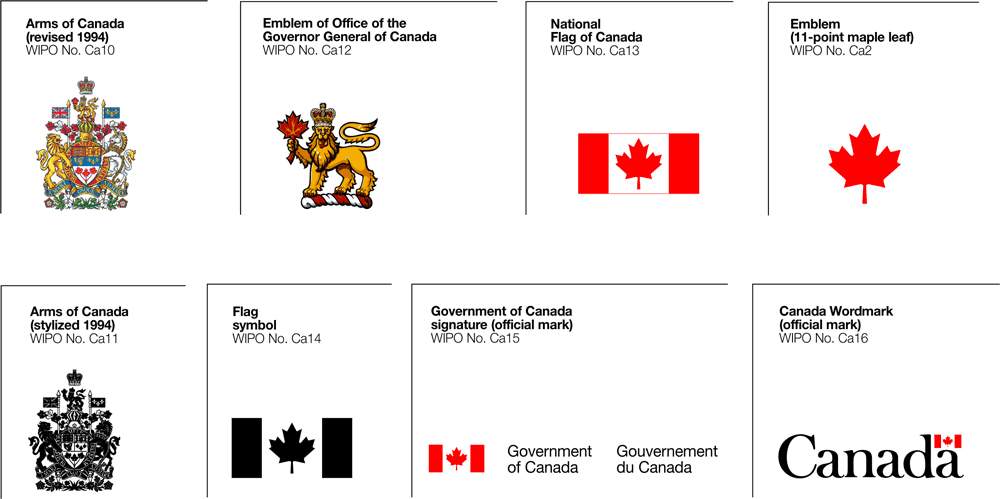
Treasury Board of Canada
The Government of Canada uses very specific branding on all their official signs and logos. The official logo of Canada, known as the Canada Wordmark, is the word “Canada” with a small Canadian flag over the “a” (seen above). Any text on official Canadian signage is written in the Helvetica font. The shade of red in the flag, which the government calls FIP Red, is always Pantone 032, or hex colour code #ff0000. Full details can be found in the Government’s Federal Identity Program technical specifications.
Name Codes
Names of places in Canada have abbreviations, or codes, that have been standardized under both Canadian law, and the regulations of the International Organization for Standardization (ISO) — specifically, ISO 3166 (Parts 1, 2, and 3). These are used in both foreign and domestic contexts, including mail, maps, and government documents.
Canada’s standard two-letter code is CA, and its standard three-letter code is CAN. The country’s numeric code is 124. All of Canada’s provinces have two-letter codes as well (see sidebar).
Time and Dates
Canadian Time
Canadian clocks use the “12-hour” model (1:00 am to 12 noon, followed by 1:00 pm to 12 midnight) rather than 24-hour time.
Canada spans six time zones, Pacific (PT), Mountain (MT), Central (CT), Eastern (ET), Atlantic (AT) and Newfoundland (NT). Right now, the time in Canada’s major cities is:
(The unusual Newfoundland time zone adds a mere 30 minutes to Atlantic/Halifax time.)
Every Canadian province and territory except Saskatchewan practices Daylight Savings. On the second Sunday in March, all Canadian clocks are set ahead one hour (“spring forward”), while on the first Sunday in November they are set back an hour (“fall back”). During that November to March period, Canada is said to be on Standard Time (also known as “Winter Time”); from March to November it’s on Daylight Time (“Summer Time”).
The official time of Canada, according to the federal government, is set by the atomic clocks of the National Research Council. It is recorded in 24-hour Eastern Time. The government maintains a phone number which endlessly recites the official time: 1-613-745-1576.
The Canadian Calendar
Canadians are taught that the week begins on Sunday, and will usually record dates in the MM/DD/YY format, for example, 7/12/10 for July 12, 2010.
Canadians ceremonially celebrate the beginning of a new calendar year on January 1 (“New Year’s Day“), with the last day of the year being December 31 (“New Year’s Eve“) but businesses and the government may measure the start and end of the year differently. This is known as a “fiscal year.” Canadian banks generally regard the fiscal year as lasting from November 1 to October 31. The fiscal year of the Canadian federal government runs from April 1 to March 31. Canadians file their taxes in accordance with the federal fiscal calendar, with tax filing deadline in most circumstances being April 30.
Electricity in Canada
Over 60% of Canadian electricity is created by hydroelectric power plants, which convert the force of naturally flowing or falling water into mechanical energy to power turbines. The remaining 40% is produced mostly by coal-burning power plants or nuclear fission ones.
Electricity produced in Canada is distributed through what is known as the Integrated North American Transmission Grid, which allows Canadian provinces and American states to share and trade electricity through multiple cross-border transmission interconnection points. Electricity in North America is actually one of the most interconnected aspects of the Canada-U.S. relationship, and essentially transcends either country’s sovereignty. It is largely regulated by the non-profit North American Electric Reliability Corporation. The provinces of British Columbia and Alberta are part of the Grid’s Western Interconnect, while all other provinces are part of the Eastern Interconnect.
Canadian outlets (see sidebar) release electricity at 120v/60hz. Certain Canadian video devices, such as analog televisions, VCRs, DVD players, camcorders, and video game consoles operate using NTSC technology, which is also used in the United States, most of South America, and Japan. This means that analog video devices from those countries will work in Canada, but ones from Europe, and most other countries (who use the rival “PAL” system), will not. More modern digital video devices do not generally operate within the NTSC/PAL system, and can be usually used anywhere in the world as a result.
Measurements in Canada
Officially, Canada uses the metric system, but in practice, the system is only half-obeyed. When the federal government began passing policies to “metricate” the country in the late-1970s, the decision was fairly controversial and many Canadians resisted the change, which has ensured the survival of the old imperial (or “customary“) system in many day-to-day aspects of Canadian life.
All of Canada’s street signs and maps are marked in kilometers, but Canadians still commonly measure small lengths and weights in pounds and feet. Grocery stores still openly sell bulk foods by the pound, exercise weights come in pounds, fabric is sold in yards, real estate agents measure homes in square feet, and it would be very rare to meet a Canadian who did not think of his own height and weight in imperial units. Most weather forecasts and thermometers still note temperatures in both Fahrenheit and Celsius, and most Canadian tape measures and rulers will have markings in both systems. A 2017 poll from the Angus Reid Institute found most Canadians use a somewhat arbitrary mix of both systems in their day-to-day lives.
Canadian clothing, including shoes, is sold in U.S. sizes, which are also based on the imperial system. Canada also uses the U.S. system for standard paper and photograph sizes, which are slightly different from those used in most other countries. A “letter” sized piece of paper in Canada is 8.5 by 11 inches, while a “legal” sized piece of paper is 8.5 by 14. Photographs are usually printed in 4 by 6, 5 by 7, or 8 by 10 inches, and most frames will be sold in these sizes.
Communications in Canada
For information on Canadian newspapers, television stations and the like, see the chapter on Canadian news and media.
Nearly 100 per cent of Canadians own telephones and the country currently uses 4G as its mobile phone communication standard. Canada is part of the North American Numbering Plan telephone system, which means Canadian phone numbers are 10 digits long, with the first three numbers being the area code, for example: (604) 555-1234. Most of the larger provinces will have several different area codes for their various regions. Canada’s international country code is simply 1 (or 001 if three digits are required), the same as the United States. Canada’s international exit code, often used for making long distance calls outside North America, is 011.
The vast majority of Canadians are Internet users, and it’s been reported that Canadians spend more time online than any other country on Earth. The Canadian URL suffix is .ca, and is widely used by both government and private websites. Control of the .ca suffix is managed by the Canadian Internet Registration Authority (CIRA) who have a policy of only granting use of the suffix to organizations with ties to Canada.
Access to certain media online, particularly streaming services, can be limited in Canada due to copyright and rights-holding arrangements with Canadian distributors. A computer connected to the internet under a Canadian IP address may have some difficulty accessing media in other parts of the world, as will a computer connected to a non-Canadian IP address who seeks to access certain Canadian media online.
Most of Canada’s mail is delivered by a government-owned corporation known as Canada Post, but private couriers also exist and are generally more common for business use. Every Canadian residence or business has a six-character postal code (or zip code) that alternates between letters and numbers, for example: V3K 2L1. The first letter in a Canadian postal code correlates with a specific region of Canada, beginning with “A” in Newfoundland and then progressing through the rest of the alphabet as you move west. Canada Post offers a flat rate for sending letters within Canada, but rates for shipping packages within the country can vary depending on weight.
To the extent anyone still watches them, Canadians use region 1 DVDs, just like in the United States.
Broadcasting and Shortwave Radio
Canada is part of the United Nations’ International Telecommunication Union (ITU) terrestrial broadcasting region 2, which consists of all of North America, South America, the Caribbean, and the Argentine, British, and Chilean claims in Antartica. Canada spans multiple geographic ITU zones, with the most heavily-inhabited parts of Canada falling under zone 6 (west), zone 7 (central), or zone 8 (east). The Atlantic provinces are in zone 9, while northern parts of the provinces are in zones 2, 3, 4, with a small part of the country’s extreme northern arctic being part of Zone 75.
Canada’s radio spectrum is generally allocated in similar fashion to most other industrialized countries. Allocation of specific radio frequencies is set by the Canadian Radio-television and Telecommunications Commission (CRTC).
- Canadian Table of Frequency Allocations, Innovation, Science and Economic Development Canada
- Radio Spectrum Allocations in Canada, Industry Canada
For 67 years, the Government of Canada used to maintain a shortwave news and information radio station known as Radio Canada International (RCI), but it was officially shut down on October 31, 2012, reflecting the dwindling influence of shortwave radio in the internet age. Today, a modified version of RCI exists as a multilingual online radio station, run by the Canadian Broadcasting Corporation (CBC). It provides news and analysis on Canadian and global affairs in English, French, Spanish, Chinese, and Arabic.
The Government of Canada continues to maintain an Ottawa-based shortwave radio station known by the call letters CHU. It does nothing except endlessly broadcast the official Canadian time (see above). It can be picked up on three HF spectrum frequencies: 3.330 kHz, 7.850 kHz, and 14.670 kHz.
Emergency Broadcasts in Canada
The Pelmorex corporation runs a cross-Canada public service known as the National Alert Aggregation & Dissemination System, or NAAD. When some law enforcement agency or government department — either at the federal, provincial, or municipal level — believes there is a massive emergency in their area, such as a natural disaster or terrorist attack, they can use NAAD to blast out a warning through any media outlet that has chosen to be part of the system. This presently includes most Canadian TV and radio stations and most major cellphone networks.
In addition to warnings about natural disasters or terrorism, NAAD also broadcasts AMBER Alerts in cases “when a child has been abducted and it is believed that his/her life is in grave danger.” Canadians can also opt-in to a free AMBER Alert texting service, care of a program known as Wireless AMBER Alert.
Weather alerts, including warnings of severe or dangerous weather conditions, are released by Environment Canada’s Meteorological Service both online and through an radio service known as Weatheradio. Weatheradio alerts are broadcast through seven radio frequencies on the Very High Frequency (VHF) public service band (and occasionally, FM frequencies as well), with different frequencies used for different parts of the country. An alternative is to simply buy a weather radio receiver, which is a special device that receives and broadcasts weather alerts from Environment Canada, including customized alerts for your specific area. Canadian and American weather radios are part of the same weather broadcast system and can thus be used in either country.
Communication for Canadians with Disabilities
Hearing-impaired people in Canada communicate using ASL (American Sign Language). ASL translators are not generally common at public functions in Canada, and television broadcasts usually rely on closed-captioning, rather than ASL instant-translations.
Blind Canadians use the contracted braille system, featuring raised dots, to read. Braille is often used on public signage for things like elevators or building directories. Canadian paper money also features braille, to help the blind tell the different bills apart.
